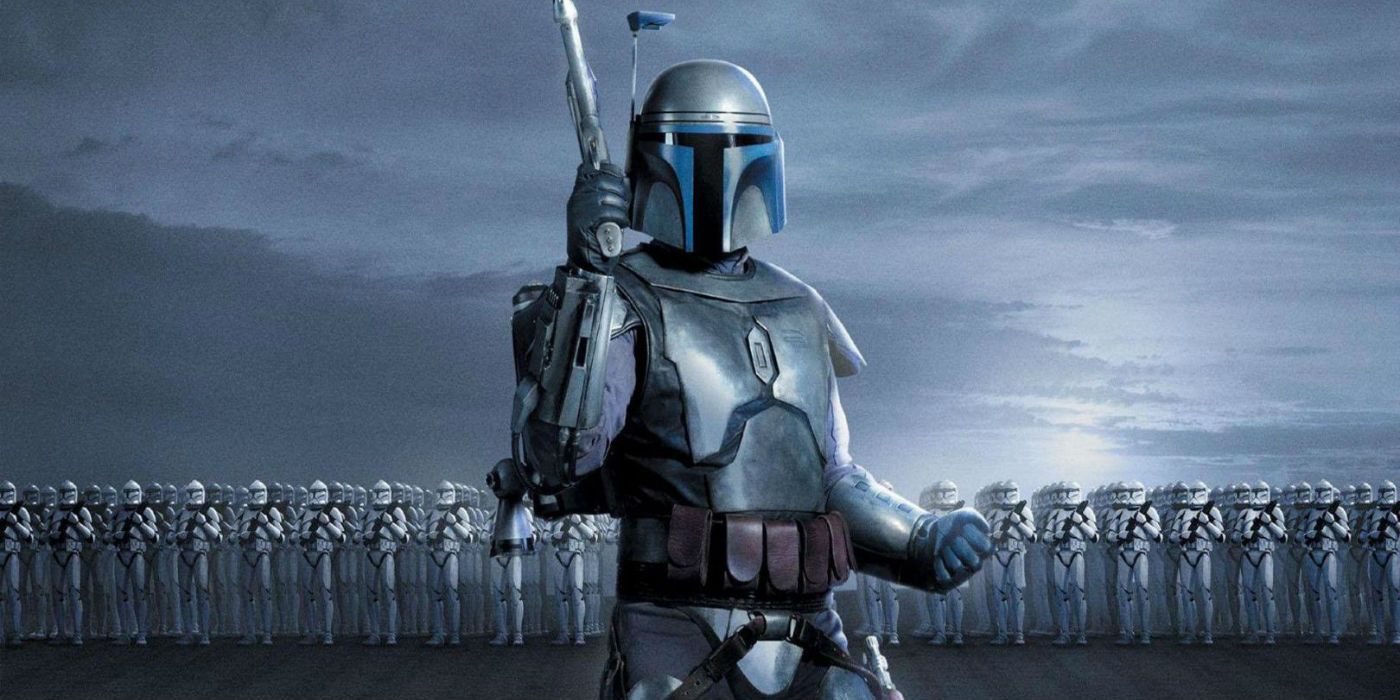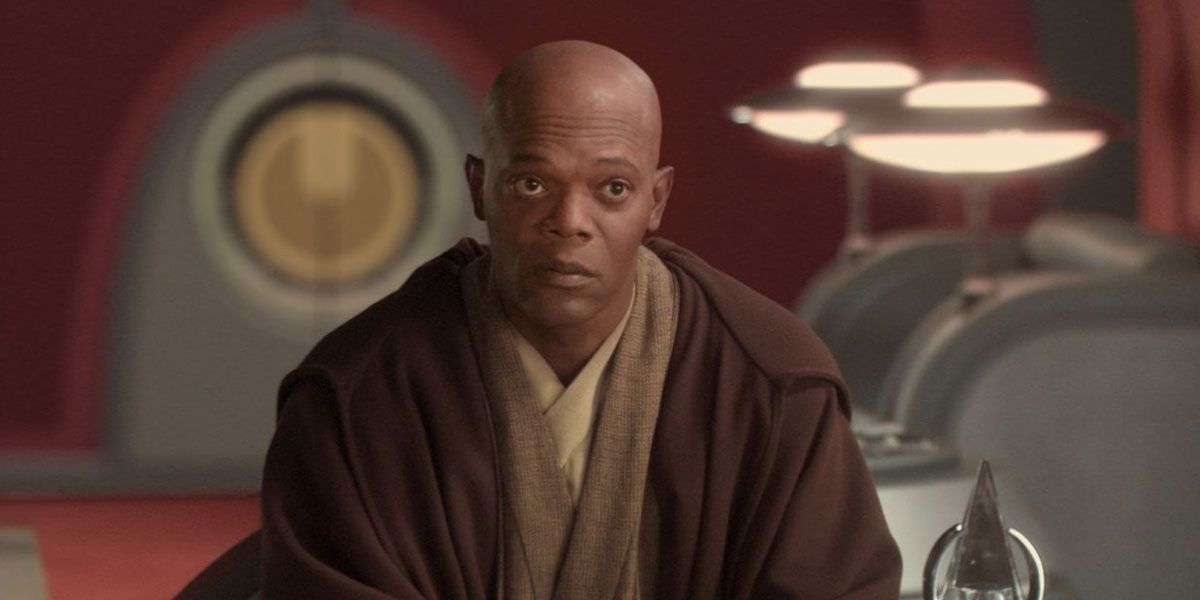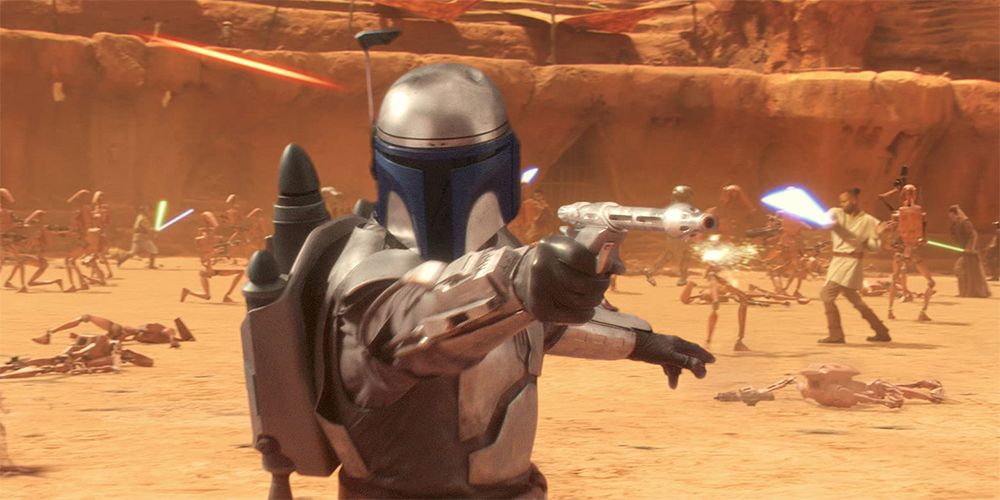During the Clone Wars, just about every being in the Star Wars galaxy knew of Jango Fett because it was his face on every Clone Trooper. However, it wasn't just the Clones that made Jango famous. His bounty hunting career made him an icon all over the galaxy, and anyone that wanted to fight wanted to be like the legendry Jango Fett.
If nothing else, people with knowledge of the bounty hunting world knew Jango’s skillset. After all, Count Dooku himself recruited Jango to be a Clone template, but his reputation was much more influential than just that. In Matthew Stover's non-canon novel, Star Wars: Shatterpoint, Mace Windu encounters some children, who enlighten the Jedi Master as to just how iconic Jango was.
The novel sends Master Windu to the jungle planet of Haruun Kal, which is his homeworld. There, the war between the Republic and the Separatists is nearly over, but the Summertime War had no end in sight. It was a large, local conflict between the native Korunnai and offworlders known as Balawai. By birth, Mace was a Koruunai, but as a Jedi, that meant nothing to him. So, when he encounters five Balawai children who are trapped in a steamcrawler that is about to go over a cliff, he instinctually tries to rescue them.
The children, however, are not thrilled with the idea of being rescued. Because Mace looks like a Koruunai, they are afraid to be taken as prisoners and try to kill him. Windu does eventually persuade the children into letting him save them, but after the fact, the children decide that he must be a bounty hunter. A real Korrun soldier would've killed them, or worse, but this man was kind and tended to some of their wounds. Since it's easier than explaining how the Republic had sent him, a Jedi, to join a guerilla fighting group and save his former padawan from darkness, Mace let the children believe that he was a bounty hunter. Unfortunately, his time with these children ended up cutting deeper than he had could've imagined.
The conversation by these children proves a few important things. First, it shows just how popular Jango was. These were random children on a random planet -- they weren’t well-traveled and weren’t especially knowledgeable about galactic events. So, for them to specifically know about Jango and his legendary reputation shows just how much of an icon the bounty hunter truly was. Even as a paid killer, he was someone for them to look up to.
But their conversation also says something about the state of the Jedi in the galaxy. These children were surrounded by a planet-wide war, so conflict was natural to them. But the galaxy was becoming more and more dangerous, and after their conversation, Mace explains that it “was not so long ago that every adventurous boy and girl would have dreamed of being a Jedi. Now their heroes are bounty hunters.”
The mindest of those children shows how the Clone Wars harmed the galaxy. If people were more and more ready to participate in a galactic war, then the Jedi’s status as peacekeepers was doomed. And on the flip side, since the Jedi were known as peacekeepers, common beings were embracing others, ones who were known for their combat prowess, as their role models. And, of course, that downturn would only continue after the war, with Sidious deeming the Jedi to be traitors during the events of Order 66.



